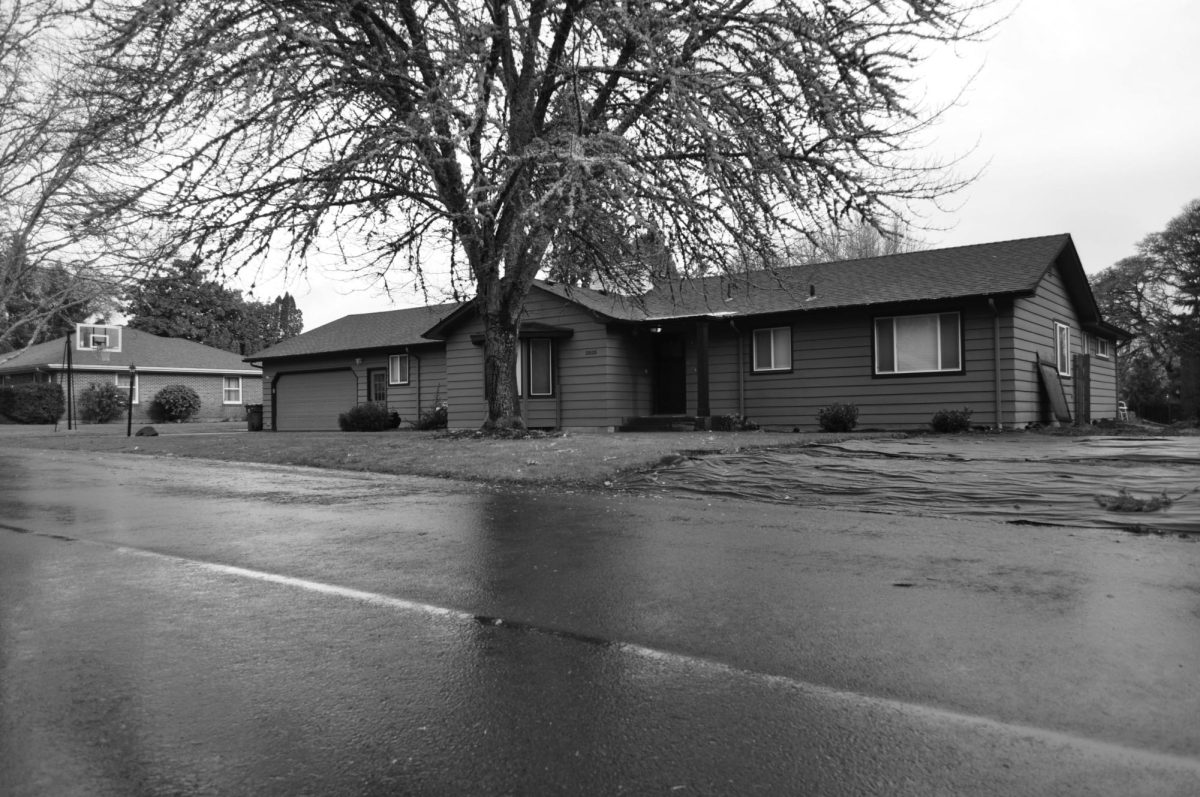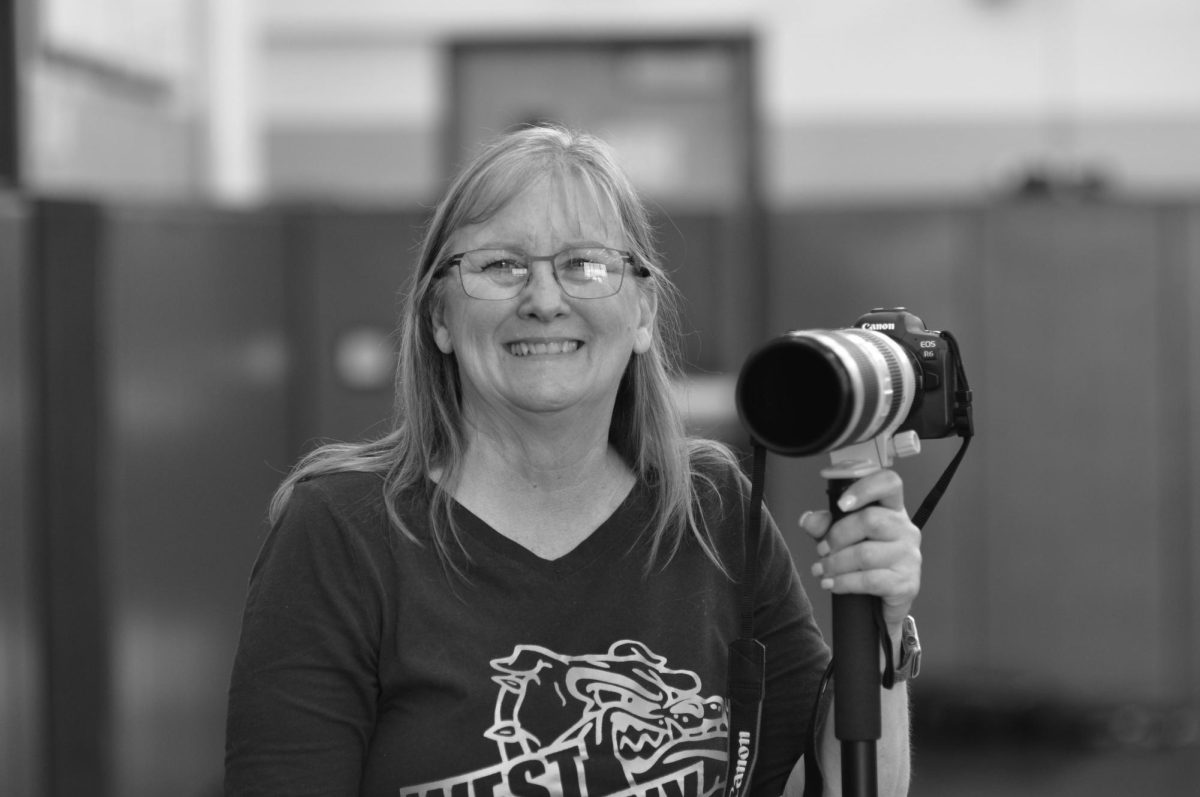Growing up by Linn Benton Community College, psychology teacher Kyle Hall found himself biking along Pacific Boulevard daily in the summer to hang out with friends, all of whom lived in the Fir Oaks neighborhood. Years later, he would find himself buying a home in that exact same neighborhood that he had biked to years ago.
“When we were looking for homes, I really wanted to live in this neighborhood,” he said, crediting it as being part of his inferiority complex. “None of my friends still lived there. I was in my 30s. But there was something [Alfred] Adler would say psychologically: I was driven to this neighborhood because I couldn’t have it.”
The original development of the neighborhood that Hall currently lives in was not his first home in the neighborhood. Upon moving back to Albany, he originally settled into a house on 33rd Avenue, a few blocks from where he currently resides, and it was there that he learned about the history of the area.
“It was a barbecue at my next door neighbor’s house on 33rd and it was like, ‘Hey, did you know about the neighborhood?” Hall said, in regards to first learning about his neighborhood being restricted in regards to race. “I don’t think it was as blunt, but they said there used to be signs to get into the neighborhood that said something like that [Caucasians only].”
In newspapers published by the Albany Democrat Herald, homes in the neighborhood, beginning in the late 1940s, were advertised with language such as “Albany’s Choice Restricted Residential Area,” and touted the properties as having “sensible restrictions for your protections.”
This language found in the advertisements at the time was referencing the language found in the Covenants, Conditions, and Restrictions for the land that the Fir Oaks neighborhood was being developed on. “No part or parcel of said premises shall ever be rented, leased, sold or in any manner transferred or conveyed, used, or occupied by any person other than a Caucasian,” the CCR read.
Around 1948, the same time that the development of Hall’s neighborhood began, the practice of redlining began across the United States, according to AP U.S. History teacher Marty Johnston. Redlining was the act of redistricting by the Federal Housing Authority to lower the property values in certain areas of cities as they connected it with federally insured home loans.
“It’s like unofficially official segregation in a sense,” he said, “and so what it did is it prevented African Americans from purchasing homes in certain districts of cities.”
However, despite the belief that African Americans would lower the property values of neighborhoods, the Urban League of Portland, a civil rights organization, published flyers in 1952 refuting this claim. “NEGRO NEIGHBORS DO NOT LOWER PROPERTY VALUES, the flyer read, citing a survey done in the city of San Francisco.
In 1959, roughly five years after those flyers were published, Oregon would enact the Fair Housing Act, which would put an end to discrimination by race when it came to private housing.
According to a report done in 1961 by the League of Women Voters of Portland, Oregon, it was found that African Americans were largely more aware of the state’s housing law compared to whites. And in that same study, it found that whites, who considered themselves to be social, were more favorable to “mixed neighborhood living” compared to whites who considered themselves as non-social.
However, it wouldn’t be until 1968 that the United States would act on the issue, passing the nationwide Fair Housing Act, which banned housing discrimination everywhere. That meant the part of Hall’s neighborhood that was developed in the 50s could no longer be exclusive based on race, but the act of discrimination had long lasting effects after these laws went into effect. In the 1990s, Albany’s mayor Alexander D. Johnson II, who is African American, faced housing discrimination of his own when attempting to rent a home, despite it now being against the law.
“My wife would go initially to sign the paperwork,” Johnson, who is married to someone who identifies as Hispanic, said. “And then I show up after work at HP and the people would say, ‘Oh, the apartment’s been rented or the house has been rented.’ So it was very uncomfortable. And after about a year, maybe a year, I decided to leave Albany. I didn’t feel welcome.”
However, before leaving town, he says he came across someone who noticed his frustration, and they offered to rent him a duplex. Johnson says he credits this man for being the reason he still lives in Albany.
Even today, Johnston says that the ethnic makeup of cities and states can be explained by policies like housing discrimination, which he says were the remnants after the practice of slavery ended.
“It’s about as white as you can get,” Johnston said of Hall’s neighborhood. “It’s about as white as sheetrock. Is that random? No, it’s not random.”
As a teacher of U.S. history himself, Hall says that he will bring up the story regarding his own neighborhood when talking about the time period post Civil War to help students understand the importance of the information being taught to them.
“You should see [the students’] faces. They’re just shocked. It brings it home where it’s not just a history thing that happened on the East coast,” he said. “No No, No. This is your history, too.”
A version of this story appeared in the 2024 Issue 3 Whirlwind magazine under the headline “any person other than a Caucasian.”






Blanca DeLeon Ruckert • Mar 12, 2024 at 12:06 pm
Very true my ex father in law pointed that out to me. Bless his soul.
Kathy Folsom • Mar 11, 2024 at 7:40 pm
I lived in Albany for 40 years left and moved to Portland eight years ago.so happy I did I hated Albany and it’s ways.if your not white your not right.I worked in the main grocery store there for 25 years and when Hispanic or black people would land a job.they where treated awful as a shop steward I would beg them to speak up.but they would just give up and quit.I had a Asian boss and they wanted her to change her name to make it easier on the customers.